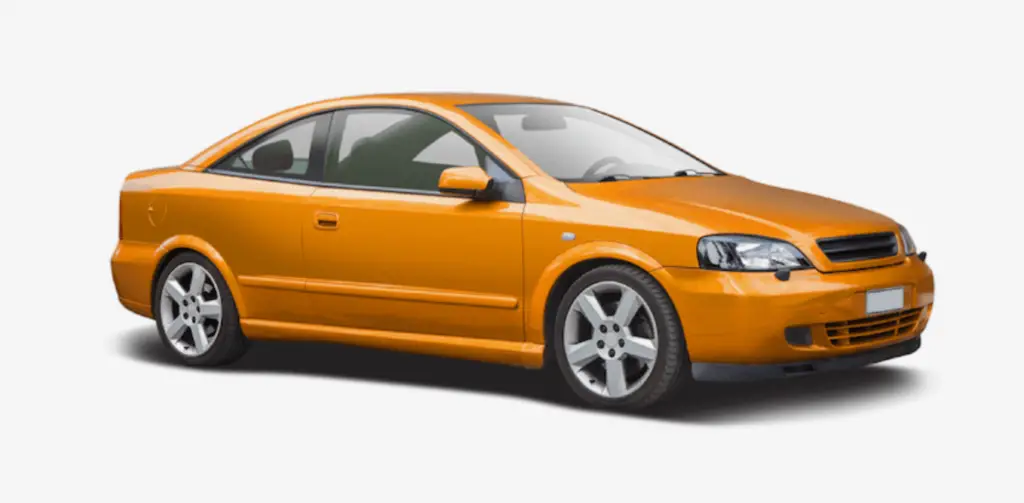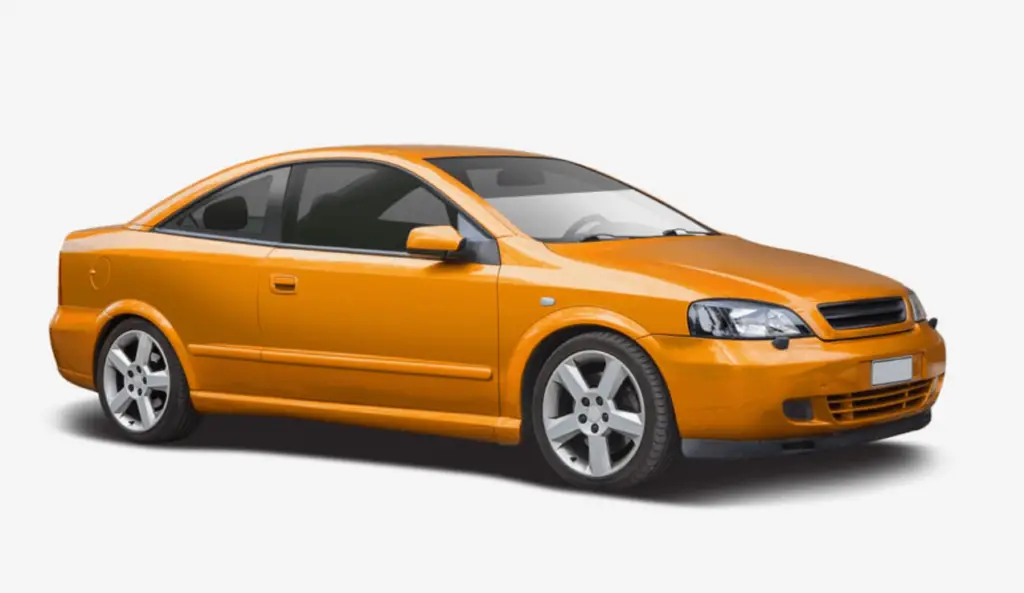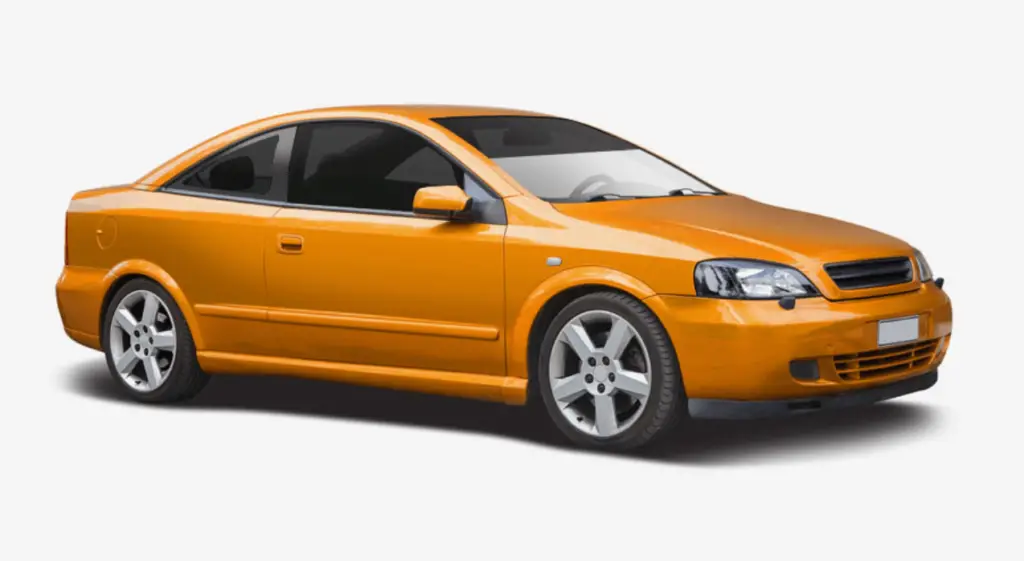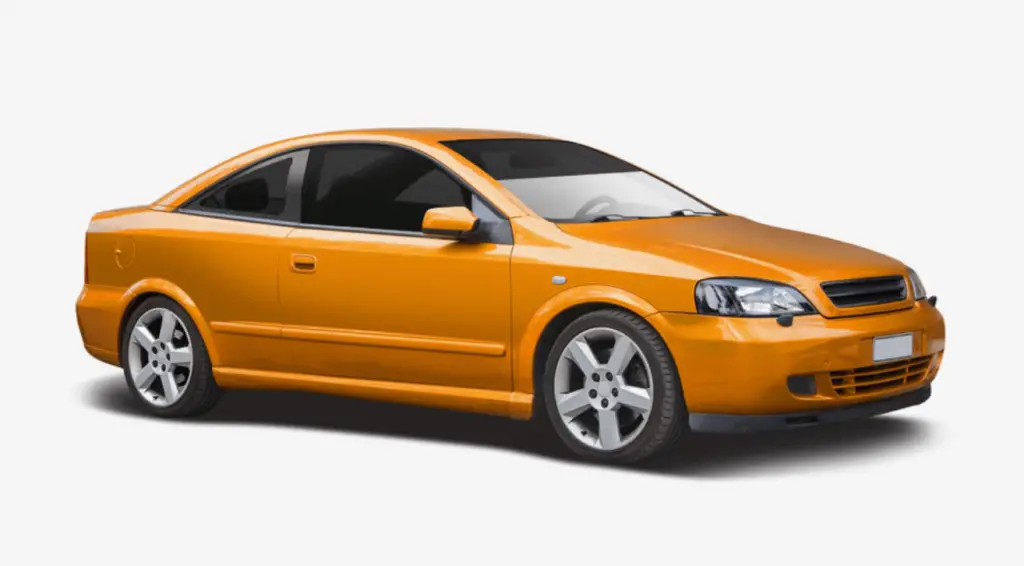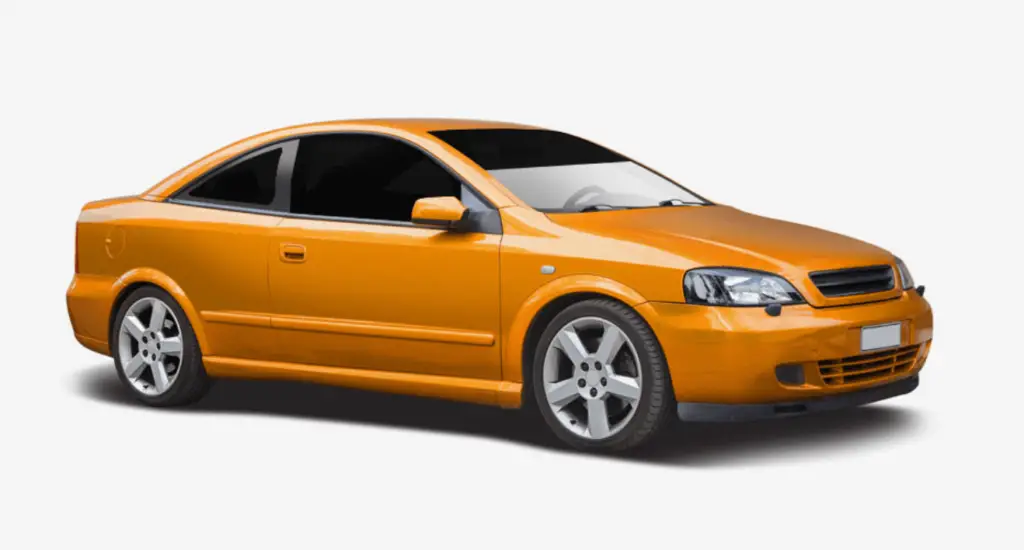Bypass the complicated processes and avoid dealing with your state government and let MyeyeRx help you get an Online Medical Exemption for Window Tint. They can help you connect you with a doctor who can write you a prescription for window tint.
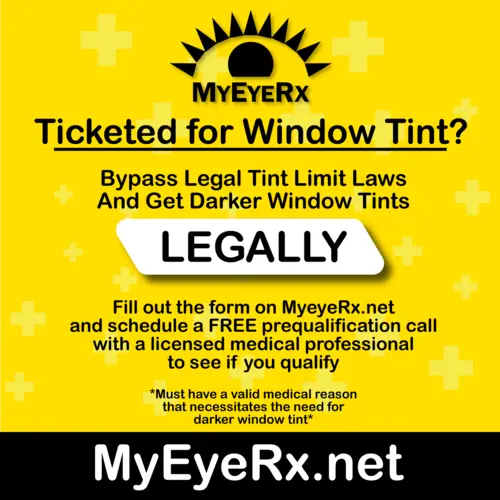
If you want to know how to get a medical exemption for window tint on your vehicle then this article has been gift-wrapped and prepared especially for you.
Here are 9 tips for getting a medical exemption for darker car window tint:
- Get a note from your doctor – Have them explain your medical condition and need for dark tint. Light sensitivity disorders like lupus are common reasons.
- Make sure the doctor specifies the level of tint needed – They should recommend the darkness and window locations (front, sides, back) required to aid your condition.
- Obtain DMV forms – Get the necessary medical exemption forms from your local DMV office. Forms vary by state.
- Fill out the forms fully – Follow all instructions and provide information on your condition, doctor, and vehicle. Have the doctor sign also.
- Submit forms to the DMV – File the completed medical exemption forms with the DMV to have the exception officially registered.
- Get documentation – Request a medical exemption certificate or sticker from the DMV to display on your tinted windows.
- Carry documentation in your vehicle – Keep the medical paperwork in your car at all times in case you are pulled over to prove the tint is allowed.
- Renew regularly if needed – Some states require renewing the medical tint exemption annually with an updated doctor’s note.
- Ensure the tint meets the medical need – Only use as much tint as required for your condition. Darker than needed may not be approved.
Getting a properly documented medical exemption provides legal allowance for darker tint that would otherwise not be permitted in your state.
Although some states do NOT allow you to tint your windows darker for medical reasons, most states do.
What States Do NOT Allow Window Tint Law Medical Exemption?
There are currently 8 states in the US that do NOT allow you to get a medical exemption for darker window tint. The states that do not make exceptions for medical reasons are:
- Colorado
- Hawaii
- Kansas
- Kentucky
- North Dakota
- Ohio
- South Dakota
- Utah
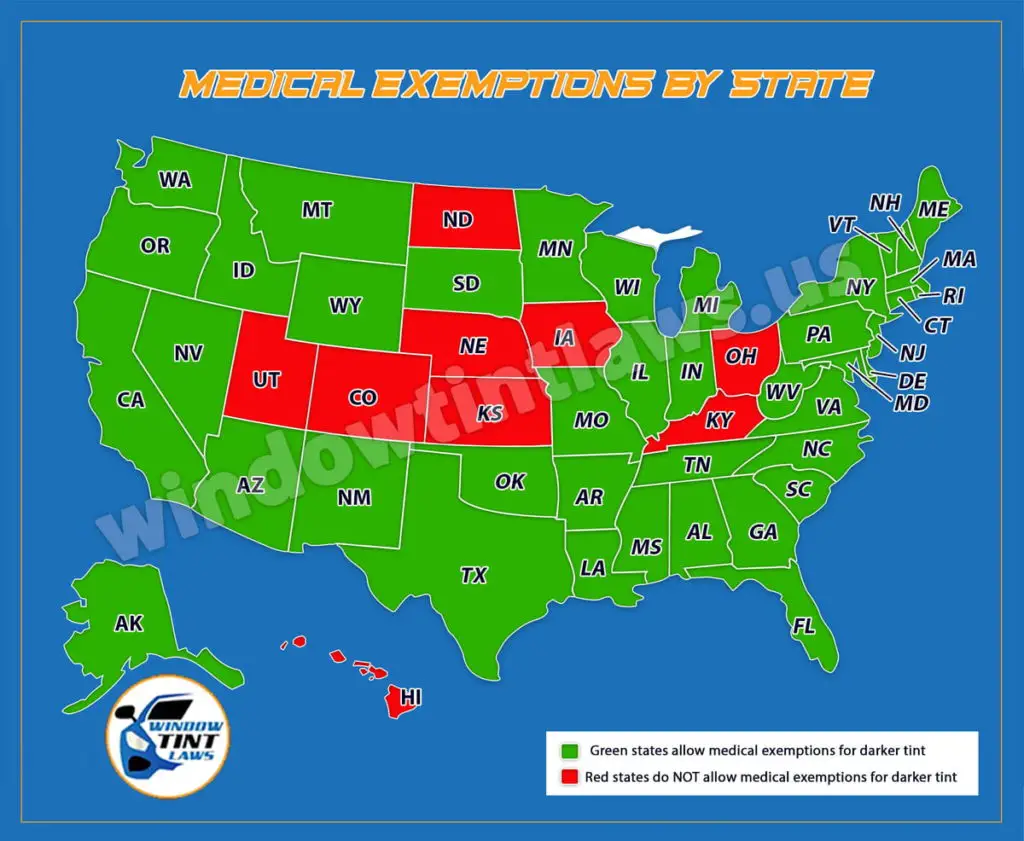
What Do I Need To Qualify For A Window Tint Medical Exemption?
When you receive a medical exemption for your window tint it will allow you to install window tint that is darker than the legal limits in that state.
- Every state has different rules and regulations on what they consider “medical eligibility” and it is important that you understand the procedure for filing a medical exemption and what is allowed.
- We have done our research and put together a comprehensive list of all of the states that allow medical exemptions below so that you can learn how to file a medical exemption in your state.
- We have included links to relevant governmental websites that you can reference for documentation and rules regarding window tint medical exemption.
If applicable we have also included links to the forms that you can use to file for your exemption
Alabama Window Tint Law Medical Exemption
Alabama State Law allows window tint medical exemptions to be given to vehicle owners or passengers who regularly drive with the vehicle owner. To file for a medical exemption in Alabama you will need a written statement from a licensed physician in Alabama. If you have been diagnosed with Light-Sensitive Porphyria you can file for an exemption. If you are granted a medical exemption for whatever reason it is important to understand that you must display your medical exemption decal on the windshield. This Decal will have your unique identification number that the law enforcement officers will use to verify the authenticity of your exemption. You will have to pay a fee upon acceptance of your medical exemption in order for a decal to be issued
For more information regarding window tint medical exemptions in Alabama you can check out these resources:
- Alabama Window Tint Medical Exemption Law – Alabama State Website
- Alabama Law Enforcement Agency – medical exemption contacts
How do you file for a window tint medical exemption in Alabama?
In order to file for a window tint medical exemption in Alabama, you will need to contact the Alabama Law Enforcement Agency’s Driver License Division, Medical Records Unit. They can be reached by mail at P.O. Box 1471 Montgomery, AL 36102 or by Phone @ 334-242-4239
Make sure that you stay up to date on the ins and outs of Alabama Tint Laws
Alaska Window Tint Law Medical Exemption
Alaska State Law allows window tint medical exemptions to be given to vehicle owners or passengers who regularly drive with the vehicle owner. To file for a medical exemption in Alaska you will need a written statement from a licensed physician in Alaska and must be renewed annually. You must also remember that according to the medical exemption law in Alaska, you need to carry your certification with you in the car at all times.
For more information regarding window tint medical exemptions in Alaska, you can check the resources:
Make sure that you stay up to date on the ins and outs of Alaska Tint Laws
Arizona Window Tint Law Medical Exemption
Arizona State Law allows window tint medical exemptions to be given to vehicle owners or passengers who regularly drive with the vehicle owner. To file for a medical exemption in Arizona you will need a letter stating the medical necessity for darker window tints that is signed by a licensed physician.
This signed letter needs to be sent to the Medical Review Program in the Arizona Department of Transportation along with the registration for every vehicle that will need to be tinted. You must submit a copy of the vehicle registration and a letter from your physician, stating the medical reason for the request. The information submitted must include your name and license number. This Medical exemption does not include the front windshield of the vehicle.
For more information regarding window tint medical exemptions in Arizona, you can check this resource:
Make sure that you stay up to date on the ins and outs of Arizona Tint Laws
Arkansas Window Tint Law Medical Exemption
Arkansas State Law allows window tint medical exemptions to be given to vehicle owners. To file for a medical exemption in Arkansas you will need a letter stating the medical necessity for darker window tints that is signed by a licensed physician. If your physician determines it is in your best interest to be exempt from Arkansas Window Tint Laws for diseases and disorders, including, but not limited to, albinism or lupus, you can file an exemption.
You are required to carry the physical medical exemption certification with you at all times in your vehicle. Medical exemptions in Arkansas are valid for 3 years after the date in which they are issued.
The Medical Exemption in Arkansas allows you to tint your windows to the following percentages:
- Windshield can have 50% tint
- Side windows can have 20% tint
- Rear windows can have 10% tint
For more information regarding window tint medical exemptions in Arkansas, you can check these resources:
Make sure that you stay up to date on the ins and outs of Arkansas Tint Laws
California Window Tint Law Medical Exemption
California State Law allows window tint medical exemptions to be given to vehicle owners. To file for a medical exemption in California you will need a letter stating the medical necessity for darker window tints that is signed by a licensed physician. If your physician determines it is in your best interest to be exempt from California Window Tint Laws for diseases and disorders, you can file an exemption.
You are required to carry the physical medical exemption certification with you at all times in your vehicle if you have window tint installed on the side windows in the front seat or on the windshield.
It is also stated in the law that the window tint installed according to these medical exemptions shall not be used during darkness. This seems to imply that your car may be rendered useless or at least illegal to drive at night. Only clear, colorless, and transparent film may be applied to your windshield and front windows according to the California window tint medical exemption rules. If an alternative type of window tint film is found to have been applied to the vehicle, authorities may require you to remove the tint.
For more information regarding window tint medical exemptions in California you can check out this resource:
Make sure that you stay up to date on the ins and outs of California Tint Laws
Colorado Window Tint Law Medical Exemption
The State of Colorado does not currently allow for window tint medical exemptions that would allow you to tint your windows darker for medical purposes. If you would like to file a petition with the State in order to appeal this and request that they change the law we suggest you contact the Colorado State Representative directly.
Make sure that you stay up to date on the ins and outs of Colorado Tint Laws
Connecticut Window Tint Law Medical Exemption
Connecticut State Law allows window tint medical exemptions to be given to vehicle owners. To file for a medical exemption in Connecticut you must fill out :
- The Request for Application & Special Permit for Exemption from Tinted Window Requirements (Form E-220)
After being approved for Medical Exemption in Connecticut through this form, your vehicle’s window tint must be validated by the Commercial Vehicle Safety Division after passing the tint measurement at either the Wethersfield or Hamden inspection lanes.
The Medical Exemption in Connecticut allows you to tint your windows all the down to 20 percent VLT if needed. You can only file for a medical exemption if your condition requires between a 20 and 32% tint.
You are required to carry the physical medical exemption certification with you at all times in your vehicle if you have window tint installed that falls under the medical exemption rules. Compliance stickers will not be affixed to windows in exempted vehicles.
If your window tint has a light transmittance of less than 20 percent you will fail the measurement and not be issued the medical exemption. If this happens to be the case with your vehicle upon inspection you will be referred to the Medical Review Unit.
For more information regarding window tint medical exemptions in Connecticut you can check out these resources:
Make sure that you stay up to date on the ins and outs of Connecticut Tint Laws
Delaware Window Tint Law Medical Exemption
Delaware State Law allows window tint medical exemptions to be given to vehicle owners. To file for a medical exemption in Delaware you must fill out the MV495 form (Application for Medical Waiver of Tinted Window Law). Unfortunately, their governmental website states that this form is no longer available online and must be acquired by going into your nearest DMV facility.
For more information regarding window tint medical exemptions in Delaware you can check out this resource:
Make sure that you stay up to date on the ins and outs of Delaware Tint Laws
Florida Window Tint Law Medical Exemption
According to Section 316.29545, Florida State Law allows window tint medical exemptions to be given to vehicle owners for specific medical reasons including, but not limited to, the following:
- Lupus
- Dermatomyositis (Autoimmune Disease)
- Albinism
- Total or Facial Vitiligo
- Xeroderma Pigmentosum
Florida Tint Laws require you to completely and accurately fill out Form HSMV 83390 (Application for Sun-screening Medical Exemption) and include the Physician’s Statement of Certification and mail it to the following address:
STATE OF FLORIDA
DIVISION OF MOTORIST SERVICES
2900 Apalachee Parkway, MS# 72
Neil Kirkman Building – Tallahassee, FL 32399-0620
The Physician filling out your Statement of Certification is required to have one of the following credentials in order for their signature and recommendation to be valid:
- Physician licensed to practice under Chapters 458, 459, or 460, Florida Statutes
- Dermatologist licensed to practice under Chapter 458, Florida Statutes
- A physician who practices medicine in a military medical facility, state hospital, or federal prison. The Physician must include the name and address of the facility
- An advanced registered nurse practitioner licensed under Chapter 464, under the protocol of a licensed physician
- Physician assistant licensed under chapter 458 or 459, Florida Statutes
This medical exemption is only given to persons who require limited exposure to light and are permitted to have sun screening material on the windshield, side windows, and windows behind the driver which is in violation of the requirements of sections 316.2951-316.2957
You must provide one of the following proofs of identification along with your application:
- A current Florida driver’s license
- A Florida identification card
How Much Does a Window Tint Medical Exemption Certificate Cost In Florida?
A window tint medical exemption certification has a fee of $6.25 for EACH applicable vehicle. A Florida Window tint medical exemption certificate has no expiration date and is non-transferable. The certificate becomes immediately VOID and invalid upon the sale or transfer of the vehicle identified on the certificate.
For more information regarding window tint medical exemptions in Florida, you can check out this resource:
Make sure that you stay up to date on the ins and outs of Florida Tint Laws
Georgia Window Tint Law Medical Exemption
Official Code of Georgia Annotated (OCGA) Section 40-8-73.1 prohibits the use of tinted windows with certain exceptions. One exception allows persons with a
restrictive medical condition to operate or ride in a vehicle with tinted windows.
When approved by the Department of Public Safety, the approval copy of this completed document serves as authorization for an exemption to the window tint law
based on a restrictive medical condition. Each application must have an attestation from a person licensed to practice medicine under Chapter 34 of Title 43 or a
person certified as an optometrist under Chapter 30 of Title 43.
A $10 fee per application/household is required. All funds must be paid by either money order, certified check, or cashier’s check. No personal checks will be
accepted. Return this form along with the required fee to the Department of Public Safety, Attention: Accounts Receivable, P.O. Box 1456, Atlanta,
GA 30371-2303. For any questions concerning this permit, please call (404)624-7523.
APPLICANT INFORMA
(1) Any person requesting an exemption from O.C.G.A. Section 40-8-73.1 who is required for medical reasons to be shielded from the
direct rays of the sun shall submit to the Department of Public Safety Permit Section an application for Limited Exemption Notice
upon such form as shall be prescribed and provided by the Department.
(2) All applications must be supported by written attestation that the applicant, for medical reasons, requires shielding from the direct
rays of the sun. The attestation shall include the specific medical diagnosis requiring such shielding and shall be entered upon such
form as shall be provided by the Department. Such attestation shall be signed by a person licensed to practice medicine under
O.C.G.A. Chapter 34 of Title 43 or by a person licensed to practice optometry under O.C.G.A. Chapter 30 of Title 43.
(3) If the applicant is not the owner of the vehicle for which the limited exemption is sought, the application shall be signed by both
the vehicle owner and the habitual occupant requiring shielding from the direct rays of the sun. Each application shall be accompanied
by a ten dollar ($10.00) non-refundable application fee payable in such manner as noted on the application form.
(4)Upon receipt by the Department of Public Safety Permit Section of the application and doctor’s attestation, the Commissioner or
his designee may, in his discretion, authorize and issue a limited exemption notice for said applicant. Such limited exemption shall
apply to such motor vehicle owned by such person or in which such person is a habitual passenger. The limited exemption from
provisions of O.C.G.A. 40-8-73.1 shall not allow the reduction of light transmission through the windshield and shall not allow the
reduction of light transmission through the windows to the right and left of the driver to less than 23 percent, plus or minus 3 percent.
(5) Such limited exemption shall be carried in the vehicle at all times and shall be displayed by the vehicle operator upon request of
any police officer as defined in O.C.G.A. Section 40-1-1(46).
(6) No exemption shall be granted for any condition for which protection from the direct rays of the sun can be adequately provided
by use of protective eyewear devices.
Georgia permits medical waivers for window tint. State licensed physician or optometrist must attest that you require special shielding from the sun due to a medical condition. A $10 application fee is charged.
With medical exemptions, a minimum of 23% VLT is required (with 3% variance).
Medical exemptions will not be granted if adequate protection can be provided by protective eyewear devices.
For more information regarding window tint medical exemptions in _____ you can check out this resource:
Make sure that you stay up to date on the ins and outs of Georgia Tint Laws
Hawaii Window Tint Law Medical Exemption
The State of Hawaii does not currently allow for window tint medical exemptions that would allow you to tint your windows darker for medical purposes. If you would like to file a petition with the State in order to appeal this and request that they change the law we suggest you contact the Hawaii State Representative directly.
Make sure that you stay up to date on the ins and outs of Hawaii Tint Laws
Idaho Window Tint Law Medical Exemption
70% windshield and 20% tint on other windows with no more than 35% luminous reflectance is allowed under a medical waiver. Written verification from a licensed physician must be carried in the vehicle.
Exemptions are given to persons not vehicles, meaning if you have an exemption any vehicle you travel in can have 70% windshield tint and 20% side window tint.
For more information regarding window tint medical exemptions in _____ you can check out this resource:
Make sure that you stay up to date on the ins and outs of Idaho Tint Laws
Illinois Window Tint Law Medical Exemption
Medical exemptions are permitted. Drivers must obtain a copy of a certified statement or letter from a licensed physician. Illinois laws allow systemic or discoid lupus erythematosus, disseminated superficial actinic porokeratosis, albinism, but also permit other medical conditions to obtain exemptions. Copy of certified statement must be kept in the installer’s permanent records.
Medical exemptions are not given when sunglasses or other protective eye devices provide sufficient protection.
The certificate must be renewed every 4 years.
For more information regarding window tint medical exemptions in _____ you can check out this resource:
Make sure that you stay up to date on the ins and outs of Illinois Tint Laws
Indiana Window Tint Law Medical Exemption
Indiana permits medical exceptions. Medical reasons must be attested to by a physician or optometrist licensed to practice in Indiana, and the physician’s or optometrist’s certification of that condition must be carried in the vehicle. The physician’s or optometrist’s certificate must be renewed annually.
For more information regarding window tint medical exemptions in _____ you can checkout this resource:
Make sure that you stay up to date on the ins and outs of Indiana Tint Laws
Iowa Window Tint Law Medical Exemption
Iowa used to allow Window Tint Medical Exemption for medical reasons but since July 2012 they no longer allow darker tint. You are allowed to have tinted windows down to 35% VLT only if they were darkened prior to July 4, 2012, due to medical conditions. You must continue to carry your DOT form #432020 which was signed by a physician prior to this date at all times in your vehicle. If you have lost your form a new one can be acquired by contacting The Office of Vehicle and Motor Carrier Services.
Iowa Office of Vehicle & Motor Carrier Services
omcs@iowadot.us
515-237-3268
For more information regarding window tint medical exemptions in Iowa you can checkout this resource:
Make sure that you stay up to date on the ins and outs of Iowa Tint Laws
Kansas Window Tint Law Medical Exemption
The State of Kansas does not currently allow for window tint medical exemptions that would allow you to tint your windows darker for medical purposes. If you would like to file a petition with the State in order to appeal this and request that they change the law we suggest you contact the Kansas State Representative directly.
Make sure that you stay up to date on the ins and outs of Kansas Tint Laws
Kentucky Window Tint Law Medical Exemption
The State of Kentucky does not currently allow for window tint medical exemptions that would allow you to tint your windows darker for medical purposes. If you would like to file a petition with the State in order to appeal this and request that they change the law we suggest you contact the Kentucky State Representative directly.
Make sure that you stay up to date on the ins and outs of Kentucky Tint Laws
Louisiana Window Tint Law Medical Exemption
Louisiana permits operating a vehicle with darker tint for the registered vehicle owner, spouse, or family member of a person who received a medical exemption. Medical conditions you can get exemptions for include World Health Organization International Classification of Disease ICD- 9-CM conditions albinoism, lupus, porphyria, or other conditions such as photophobia.
Department of Public Safety and Corrections issues a special decal that must be prominently displayed on vehicles at all times indicating tinted windows for medical reasons. A medical exemption affidavit must also always be carried in the vehicle.
If you received an exemption and installed a darker tint on your vehicle, acts no you are obligated to remove it in case of sale or transfer of the vehicle.
Any exemptions granted in Louisiana are subject to review every three years. Persons convicted of violent crimes or drug offenses are not eligible for medical exemptions.
For more information regarding window tint medical exemptions in _____ you can check out this resource:
Make sure that you stay up to date on the ins and outs of Louisiana Tint Laws
Maine Window Tint Law Medical Exemption
Maine permits medical exemptions. The Chief of the State Police may upon proper application provide vehicle owners with a certificate of exemption.
For more information regarding window tint medical exemptions in Maine you can check out this resource:
Make sure that you stay up to date on the ins and outs of Maine Tint Laws
Maryland Window Tint Law Medical Exemption
Maryland permits medical waivers for window tint. Written certification from a physician licensed in Maryland must be carried in the vehicle.
For more information regarding window tint medical exemptions in _____ you can check out this resource:
- Maryland State Police – Downloads (MSP ASED 23-05(A) – Post manufacture window tint medical exemption form)
- If the document is missing on MSP website, contact Automotive Safety Enforcement Division of Maryland State Police for more info.
- Maryland Transportation Code § 22-406 – see (i) 4 for medical exemption info
Make sure that you stay up to date on the ins and outs of Maryland Tint Laws
Massachusetts Window Tint Law Medical Exemption
Massachusetts Department of Transportation’s Registry of Motor Vehicles issues medical exemptions. The form is available below and must be filled and signed by a licensed physician. The exemption can only be issued by vehicles owned or operated by persons with medical conditions.
Furthermore, waivers are only issued to persons who are permanently photophobic or photosensitive, and when such conditions can not be corrected with sunglasses.
For more information regarding window tint medical exemptions in _____ you can check out this resource:
Make sure that you stay up to date on the ins and outs of Massachusetts Tint Laws
Michigan Window Tint Law Medical Exemption
The state of Michigan allows medical exemptions for persons who are light-sensitive or photosensitive. The owner or operator of a motor vehicle must have a letter signed by a licensed physician in the vehicle.
Special window treatments installed due to medical conditions must not interfere or obstruct the driver’s vision of the highway or intersecting highway.
Michigan does not specify minimum window tint darkness allowed under medical exemptions, but it must have less than 35% light reflection.
For more information regarding window tint medical exemptions in _____ you can check out this resource:
Make sure that you stay up to date on the ins and outs of Michigan Tint Laws
Minnesota Window Tint Law Medical Exemption
Window tinting medical exemptions are permitted. Licensed physician’s prescription or statement must be in vehicle at all times. This statement must specify the minimum percentage of light transmittance (VLT) required to satisfy the medical needs of the patient.
This statement must also contain an expiration date, which must be no more than two years after the date it was issued.
For more information regarding window tint medical exemptions in _____ you can checkout this resource:
Make sure that you stay up to date on the ins and outs of Minnesota Tint Laws
Mississippi Window Tint Law Medical Exemption
Licensed physicians can issue a signed affidavit stating the person has a physical condition or disease requiring greater sun protection.
A certificate of medical exemption on a form prepared by the Commissioner of Public Safety and signed by the person on whose behalf it was issued must be displayed on the vehicle’s dashboard.
The medical exemption form is not provided online. Contact the Mississippi Department of Public Safety for the form or more information.
Make sure that you stay up to date on the ins and outs of Mississippi Tint Laws
Missouri Window Tint Law Medical Exemption
Missouri Highway Patrol issues special permits for window tint. A written prescription from a physician must be provided to your local Highway Patrol headquarters specifying the tint percentage needed due to a person’s medical condition.
A window tinting permit must be carried in the vehicle at all times. When the permit is issued, you will also receive a sticker for the lower-left corner of your windshield and a decal that will be placed on the rear window or rear bumper.
For more information regarding window tint medical exemptions in _____ you can check out this resource:
Make sure that you stay up to date on the ins and outs of Missouri Tint Laws
Montana Window Tint Law Medical Exemption
A signed affidavit stating reasons for medical exemption can be provided by a licensed physician, licensed physician assistant, or advanced practice registered nurse.
Highway Patrol or local law enforcement agencies may grant a waiver based on the affidavit. The waiver will contain a clear identification of the vehicle, date issued, name and owner of the vehicle, reason for granting the waiver, date when it becomes effective, and signature of law enforcement officer granting the waiver.
No forms are provided online. Once you obtained your doctor’s statement, bring it to your nearest Highway Patrol or other law enforcement office for more information.
For more information regarding window tint medical exemptions in _____ you can check out this resource:
Make sure that you stay up to date on the ins and outs of Montana Tint Laws
Nebraska Window Tint Law Medical Exemption
The State of Nebraska has recently Revised Statutes 60-6,260 to allow for window tint medical exemptions to tint your windows darker for medical purposes. In order to be approved for an exemption, you will need an affidavit signed by a licensed physician. The waiver will need to be in writing and needs to include the date issued, the vehicle identification number, the registration number, or other description to clearly identify the motor vehicle to which the waiver applies. For the exact legislature, click here.
Make sure that you stay up to date on the ins and outs of Nebraska Tint Laws
Nevada Window Tint Law Medical Exemption
Nevada allows medical exemptions. A maximum of 20% VLT can be approved.
For more information regarding window tint medical exemptions in _____ you can check out this resource:
- Nevada Department of Public Safety, Highway Patrol Division: Application for Window Tint Exemption (Form DO-200; .pdf file)
Make sure that you stay up to date on the ins and outs of Nevada Tint Laws
New Hampshire Window Tint Law Medical Exemption
New Hampshire allows persons with a medical waiver to have up to 35% VLT on front side windows and windshield. NH laws include medical conditions such as extreme intolerance to light, allergic reactions to the sun, melanoma, lupus, porphyria, or any other medical condition which is aggravated by exposure to the sun.
Medical waivers once granted are valid for 2 years and may be granted for two vehicles. No fees are required.
For more information regarding window tint medical exemptions in _____ you can check out this resource:
- New Hampshire DMV – Tinted windows & medical waivers information
- New Hampshire DMV – Application for tinted window medical waiver (.pdf form)
Make sure that you stay up to date on the ins and outs of New Hampshire Tint Laws
New Jersey Window Tint Law Medical Exemption
New Jersey permits medical exemptions. Windshield and front side windows may have below 70% and 35% VLT respectively. Conditions include ophthalmic or dermatological photosensitivity, chronic actinic dermatitis, photosensitive eczema, and skin cancers having an associated diagnosis of chronic actinic dermatitis.
A medical exemption certificate must be in the vehicle at all times. Label with name of sun-screening material or product manufacturer and registration number of facility that installed the tint must be displayed on windshield and front right side window. Tint film installed due to medical waivers must be removed prior to the sale of the vehicle.
For more information regarding window tint medical exemptions in _____ you can check out this resource:
- New Jersey Motor Vehicle Commission – Window sun-screening for medical reasons
- New Jersey Motor Vehicle Commission – Application for Sunscreening (.pdf file – NEW form)
Make sure that you stay up to date on the ins and outs of New Jersey Tint Laws
New Mexico Window Tint Law Medical Exemption
New Mexico permits unspecified VLT with medical exemptions. Physicians or optometrists licensed in New Mexico can issue affidavits that must be in the vehicle at all times.
Make sure that you stay up to date on the ins and outs of New Mexico Tint Laws
New York Window Tint Law Medical Exemption
Latest New York Health department regulations updated in December 2017 include the following medical conditions: albinism, chronic actinic dermatitis/actinic reticuloid, dermatomyositis, lupus erythematosus, porphyria, xeroderma (pigmentosa) pigmentosum, severe drug photosensitivity, photophobia, or any other condition or disorder causing severe photosensitivity in which the individual is required for medical reasons to be shielded from the direct rays of the sun.
For more information regarding window tint medical exemptions in _____ you can check out this resource:
- New York DMV – Tinted windows FAQ
- New York DMV – Application for tinted window exemption (.pdf file; form MV-80W)
Make sure that you stay up to date on the ins and outs of New York Tint Laws
North Carolina Window Tint Law Medical Exemption
North Carolina allows windshield tint with 70% VLT under medical waivers. A permit can be issued by N.C. Division of Motor Vehicles Medical Review Program for 2 to 5 years. A medical exception sticker must be displayed in the lower left-hand corner of the rear window. Failure to display the sticker is punishable by a $200 fine.
For more information regarding window tint medical exemptions in _____ you can check out this resource:
- North Carolina Department of Transportation: Window tinting
- North Carolina Department of Transportation: Tinted window waiver application form (.pdf file)
Make sure that you stay up to date on the ins and outs of North Carolina Tint Laws
North Dakota Window Tint Law Medical Exemption
The State of North Dakota does not currently allow for window tint medical exemptions that would allow you to tint your windows darker for medical purposes. If you would like to file a petition with the State in order to appeal this and request that they change the law we suggest you contact the North Dakota State Representative directly.
Make sure that you stay up to date on the ins and outs of North Dakota Tint Laws
Ohio Window Tint Law Medical Exemption
The State of Ohio does not currently allow for window tint medical exemptions that would allow you to tint your windows darker for medical purposes. If you would like to file a petition with the State in order to appeal this and request that they change the law we suggest you contact the Ohio State Representative directly.
Make sure that you stay up to date on the ins and outs of Ohio Tint Laws
Oklahoma Window Tint Law Medical Exemption
Oklahoma laws allow medical exemptions. Exemptions are issued by The Commissioner of Public Safety for vehicle owners or habitual passengers. Medical waivers allow further reducing VLT on the rear window and side windows and altering color.
To receive a waiver you must provide a written attestation from a physician licensed pursuant to Section 495 of Title 59 of the Oklahoma Statutes.
For more info contact the Oklahoma Department of Public Safety.
Make sure that you stay up to date on the ins and outs of Oklahoma Tint Laws
Oregon Window Tint Law Medical Exemption
Oregon permits window tint medical waivers. Lower light transmission tint may be installed on the side and rear windows of a vehicle registered in the name of the person, legal guardian, or household member.
An affidavit from a licensed physician or optometrist, a prescription, or a letter on the practitioner’s letterhead must be carried in the vehicle at all times and presented to police officers if asked. This letter or notarized affidavit must state the physical condition that requires darker window tint.
No permits are issued by DMV / Department of Transportation, and the documents above are enough to qualify for exemptions.
The tint installer must also provide you with a certificate stating the total light transmission on windows.
For more information regarding window tint medical exemptions in _____ you can check out this resource:
- Oregon Department of Transportation – Vehicle Equipment Standards (FAQ – Windows)
- Oregon DoT – Frequently asked questions about window tinting (.pdf file)
Make sure that you stay up to date on the ins and outs of Oregon Tint Laws
Pennsylvania Window Tint Law Medical Exemption
Department of Transportation can issue a certificate of exemption for vehicles where the owner or member of the household of the owner or registrant who regularly drives or is driven in the vehicle, suffers from a physical condition determined by the department, in consultation with the Medical Advisory Board, to justify the exemption.
Pennsylvania allows only colorless materials, and to apply for a medical exemption you need to contact the Pennsylvania Department of Transportation’s Medical Unit (number specified in PDF below).
For more information regarding window tint medical exemptions in _____ you can check out this resource:
- Pennsylvania Code Title 75 – VEHICLES, § 4524
- Pennsylvania Department of Transportation – Vehicle window tint fact sheet (.pdf file)
Make sure that you stay up to date on the ins and outs of Pennsylvania Tint Laws
Rhode Island Window Tint Law Medical Exemption
Rhode Island Division of Motor Vehicles issues stickers that must be applied to the driver’s side window. Exemptions are issued to vehicle owners or legal guardians of persons required to be shielded from the sun. Affidavits signed by a physician or optometrist must be provided to DMV.
For more information regarding window tint medical exemptions in _____ you can check out this resource:
Make sure that you stay up to date on the ins and outs of Rhode Island Tint Laws
South Carolina Window Tint Law Medical Exemption
Signed affidavit by a licensed physician or optometrist must be in the vehicle at all times. The affidavit must state that the person has a physical condition making it necessary to equip the vehicle with otherwise illegal window tint. Affidavits must be updated every two years.
Make sure that you stay up to date on the ins and outs of South Carolina Tint Laws
South Dakota Window Tint Law Medical Exemption
The State of South Dakota does not currently allow for window tint medical exemptions that would allow you to tint your windows darker for medical purposes. If you would like to file a petition with the State in order to appeal this and request that they change the law we suggest you contact the South Dakota State Representative directly.
Make sure that you stay up to date on the ins and outs of South Dakota Tint Laws
Tennessee Window Tint Law Medical Exemption
Any person with a medical condition that is adversely affected by ultraviolet light may submit a statement to the commissioner from that person’s physician certifying that the person has a medical condition that requires reduction of light transmission in the windows of the person’s vehicle.
The commissioner shall submit the certified statement to the department’s medical review board for evaluation. If the review board finds the exemption warranted, it shall recommend that the commissioner authorize the exemption and the degree of tinting exemption that is appropriate. The commissioner shall then supply a certificate or decal, indicating the degree of exemption, to the applicant who shall display it in the motor vehicle.
For more information regarding window tint medical exemptions in _____ you can check out this resource:
Make sure that you stay up to date on the ins and outs of Tennessee Tint Laws
Texas Window Tint Law Medical Exemption
Motorists may request a medical exemption from the Texas Department of Public Safety by submitting an application and a signed statement or prescription from a licensed physician, ophthalmologist, or optometrist. This statement should state that it is his or her opinion that the exemption is necessary to safeguard the motorist’s health.
With medical waivers, light transmission can be under 25% VLT on any windows except the windshield. An untinted UV filter can be applied to the windshield provided it does not reduce light transmission by more than 5%.
For more information regarding window tint medical exemptions in _____ you can check out this resource:
- Texas Department of Public Safety – Window tinting standards
- Texas Department of Public Safety – Application for window tint medical exemption (.pdf file)
Make sure that you stay up to date on the ins and outs of Texas Tint Laws
Utah Window Tint Law Medical Exemption
The State of Utah does not currently allow for window tint medical exemptions that would allow you to tint your windows darker for medical purposes. If you would like to file a petition with the State in order to appeal this and request that they change the law we suggest you contact the Utah State Representative directly.
Make sure that you stay up to date on the ins and outs of Utah Tint Laws
Vermont Window Tint Law Medical Exemption
Vermont allows medical exemptions. A completed application with a signed document by a licensed physician or optometrist must be provided to The Commissioner. Exemption permits must be renewed every 4 years.
The exemption only allows the tinting of side windows next to the driver.
For more information regarding window tint medical exemptions in _____ you can check out this resource:
Make sure that you stay up to date on the ins and outs of Vermont Tint Laws
Virginia Window Tint Law Medical Exemption
To apply for a medical authorization in Virginia, the person with the medical condition must submit a completed Sun-Shading Medical Authorization Application (MD-20) to DMV. The application must include vehicle information and a statement from a physician, physician’s assistant, nurse practitioner, ophthalmologist, or optometrist certifying that sunshading is necessary for the individual’s health.
The vehicle owner will receive a new registration card with “sunshading” printed in the Special Conditions space. This registration card serves as verification that the vehicle is authorized to have sunshading.
With a medical exemption, you are permitted to tint front side windows down to 35% VLT. The entire front windshield can be tinted to 70% VLT, and the top 5 inches (AS-1 line) of the windshield can have 35% VLT.
For more information regarding window tint medical exemptions in _____ you can check out this resource:
- Virginia DMV – Vehicle sun-shading medical authorization
- Virginia DMV – Sun-shading medical authorization application (.pdf form)
Make sure that you stay up to date on the ins and outs of Virginia Tint Laws
Washington Window Tint Law Medical Exemption
All windows and the top 6 inches of the windshield may have greater light reduction under a medical exemption. Written verification from a licensed physician must be in the vehicle, stating that the operator or passenger must be protected from exposure to sunlight for physical or medical reasons.
Make sure that you stay up to date on the ins and outs of Washington Tint Laws
Washington DC Window Tint Law Medical Exemption
Waivers are issued in the name of the person with the condition and are valid as long as the person has the condition or until the vehicle is sold.
To apply for a waiver, the person with the medical condition must submit a completed Vehicle Tint Waiver Request Form to the DC DMV Inspection Station. Form requires a physician statement, and authorizes you to equip your vehicle with window tinting films or applications that exceed the regulatory limit as indicated on the form.
For more information regarding window tint medical exemptions in _____ you can checkout this resource:
- Washington D.C. DMV – Medical waivers for vehicle window tinting restrictions
- Washington D.C. DMV – Vehicle tint waiver request (.pdf file)
West Virginia Window Tint Law Medical Exemption
WV laws permit medical exemptions for motor vehicles in the name of a person or person’s legal guardian who has in their possession an affidavit signed by a physician or optometrist stating the person has a medical condition making it necessary to use darker or more reflective window tint.
The affidavit must be in the possession of the person so afflicted, or the person’s legal guardian, at all times while being transported in the motor vehicle.
Make sure that you stay up to date on the ins and outs of West Virginia Tint Laws
Wisconsin Window Tint Law Medical Exemption
Medical exceptions are permitted by Wisconsin laws. A written statement from the treating physician or Christian Science practitioner which identifies the patient, the medical condition justifying the recommendation, whether the condition is temporary or permanent, and the vehicle to which the recommendation applies, including the make, model, year, and vehicle identification number, shall be carried in the vehicle at all times.
Exemptions are only valid for front-side windows and must not be under 35% VLT.
Make sure that you stay up to date on the ins and outs of Wisconsin Tint Laws
Wyoming Window Tint Law Medical Exemption
Medical certificates are issued by the Wyoming Department of Transportation. A signed statement from a physician or optometrist is required, stating the medical condition and necessity to shield a person from the sun.
Under a medical waiver, the windshield must have over 70% VLT. Other windows may have no less than 25% VLT. Certificates are valid for as long as the medical condition persists, or until the vehicle is sold.
For more information regarding window tint medical exemptions in _____ you can check out this resource:
Make sure that you stay up to date on the ins and outs of Wyoming Tint Laws
Every state has different rules and regulations regarding window tinting medical exemptions.
Currently, only 9 states do not allow for medical exemption but through proactive lobby in the state legislature, you can request for these state laws to change.
If you are in a state where window tint medical exemptions are allowed you must always provide proof of your need for the exemption signed by a licensed physician.
It is almost always required that you have your medical exemption certificate with you in the vehicle at all times if you are in a vehicle that has tint that is only allowed under the exemption.
It is against the law for a doctor or physician to submit false documents on your behalf, so make sure that your medical condition is indeed legitimate before seeking a doctor’s note.


